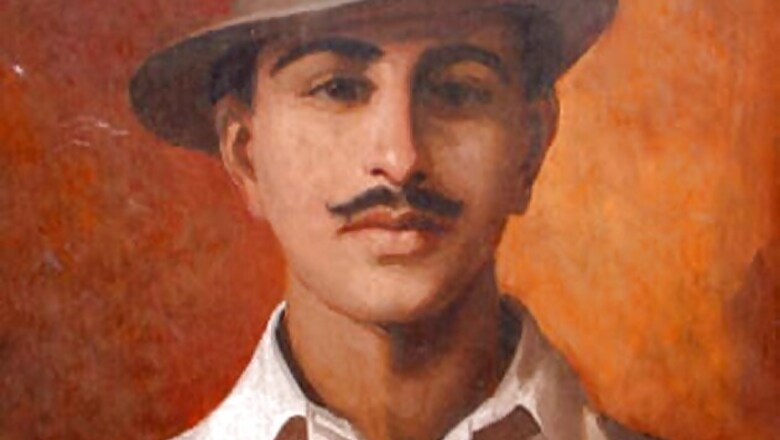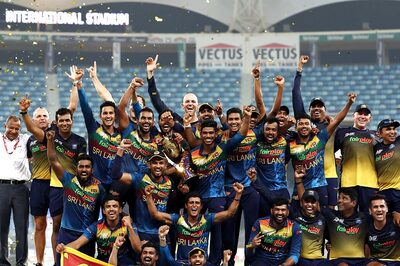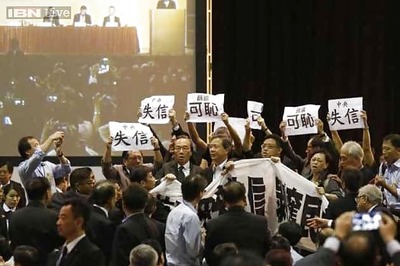
views
New Delhi: Bhagat Singh was born on September 28, 1907, in Banga village of Jaranwala Tehsil in the Lyallpur district of Punjab province of undivided India. His birthplace today falls in Pakistan.
Bhagat Singh was a revolutionary freedom fighter and one of the major inspirational figures of the Indian Independence movement. Though briefly affiliated to MK Gandhi's movement of non-violent struggle, Singh later became disillusioned with Gandhi's philosophy. Brutality of the British Raj convinced him that non-violence was not the right answer. When Gandhi called off his Non-cooperation Movement following the Chauri Chaura incident where a mob turned violent and burnt policemen alive, it made a significant impact on Bhagat Singh's mind.
One of the most interesting instances of usurption of an icon in the cultural-political space of India has been that of Bhagat Singh. He became the preserve of cultural nationalists and right-wing groups who called him the ideal Indian. In his own life though, Singh embraced atheism and was deeply influenced by Karl Marx and Lenin. Key components of Marxism-Leninism were incorporated in his idea of revolutionary struggle. Under his leadership, the Kirti Kissan Party was renamed the Hindustan Socialist Republican Organisation. Singh and his organisation was criticised by Gandhi himself who thought that the use of violence would set the freedom movement back.
Socialism and secularism were perhaps Singh's most important contributions to the Indian freedom struggle. It was particularly contextual as Singh understood that British imperialism thrived on divide and rule, by fomenting tensions between Hindus and Muslims. Bhagat Singh removed his beard, forbidden by his religion, as he did not want to be confined to a community. British imperialism, to him, was a scourge for all Indians, irrespective of their faith, caste and creed. And in more than one place, he talked about how the idea of colonialism and imperialism were antithetical to the notions of freedom. Singh's ideology was, thus, not just confined to India. Profusely well-read and interested in debates and theatre workshops, there was an international perspective to his ideas.
It is believed as well as disputed whether Singh was involved in plotting the 1928 killing of John P. Saunders, who was mistakenly assassinated by the Shivaram Rajguru, Sukhdev Thapar, Jai Gopal and Chandrashekhar Azad in Lahore. But he knew the group well and planned their escape. Azad had reorganised the Hindustan Republican Association under the new name of Hindustan Socialist Republican Association with Singh's help, another pointer to the Leftist orientation of these famed revolutionary fighters.
On April 8, 1924, Baghat Singh and friend BK Dutt hurled two bombs on to the floor of the Central Delhi Hall in New Delhi while the Central Legislative Assembly was in session. This plan was okayed at a top meeting of Hindustan Socialist Republican Association leadership. The bombs were hurled away from individuals so as not to cause any harm to anyone. Following the explosions in which no one was hurt, Singh and Dutt started showering leaflets which became famous as as "The Red Pamphlet". The pamphlet began with a passage which was to become legendary in the Indian revolutionary struggle:
"It takes a loud voice to make the deaf hear, with these immortal words uttered on a similar occasion by Vaillant, a French anarchist martyr, do we strongly justify this action of ours."
Singh and Dutt ended the pamphlet with the words: "Long Live the Revolution!" "Inquilab Zindabad" became one of the most enduring slogans of the Indian Independence Movement. It later on became the war cry for workers' and peasants' and trade union movements in India.
Singh and Dutt surrendered soon after this. Singh was sentenced for life but soon after his sentence started, he was re-tried for his involvement in the Saunders case. Singh was hanged on March 23, 1931.
Bhagat Singh is also known as "Shaheed (Martyr) Bhagat Singh". His identity has been twisted and turned by every opportunistic political group to suit their ends. Even Bollywood movies have failed to do justice to the man's vision.


















Comments
0 comment